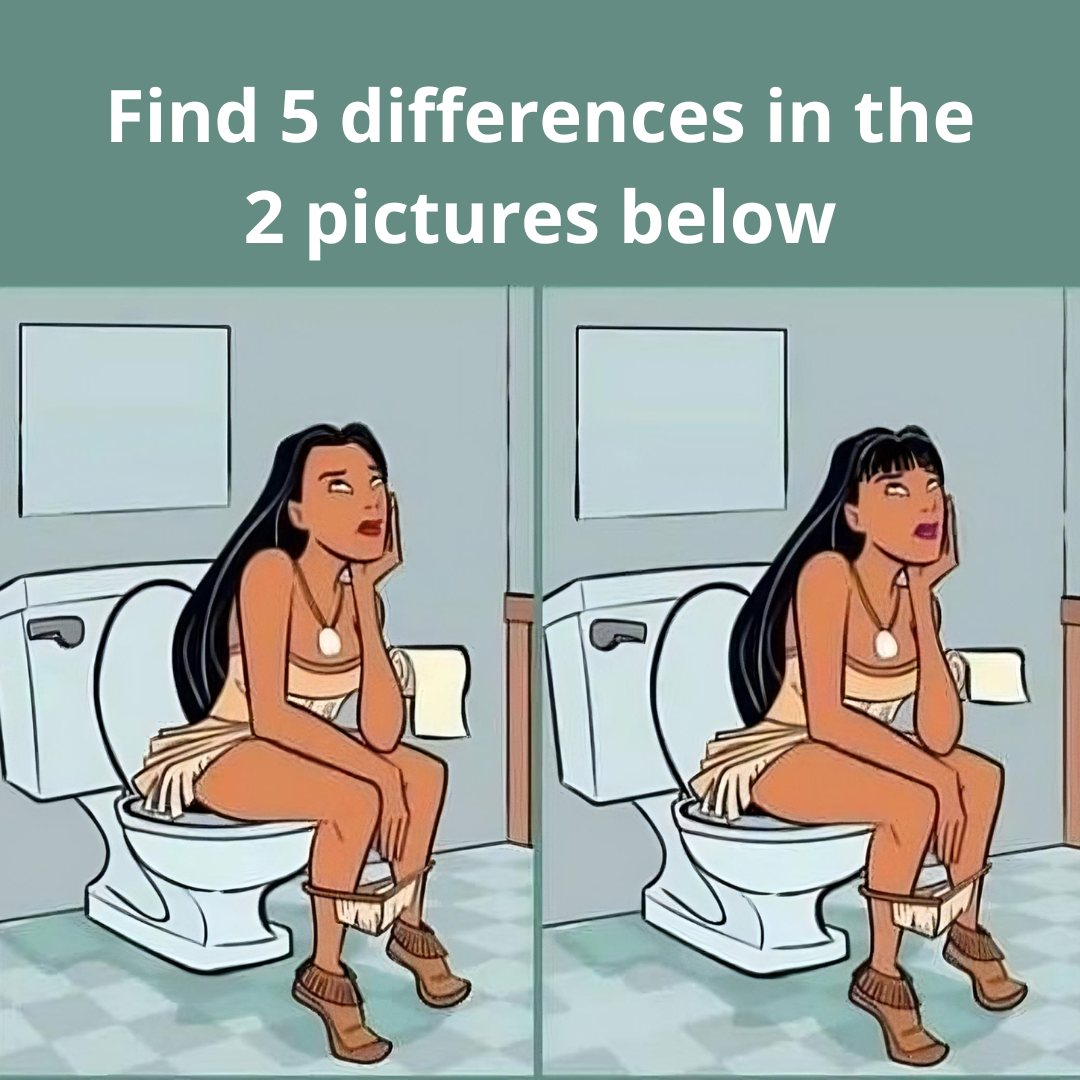Visual puzzles have long been a favorite pastime for those who enjoy challenging their minds, and today’s task is no exception. We’re diving into a classic spot-the-difference puzzle, where two images appear identical at first glance. However, a closer look reveals five subtle variations cleverly hidden within. Are you ready to test your observation skills and attention to detail? Let’s get started!

Spot-the-difference puzzles are more than just entertaining—they’re an excellent way to enhance focus and train your brain. But as fun as they are, these puzzles can be trickier than expected. Why? Because even the smallest details can make a big difference. To increase your chances of success, let’s explore some common mistakes people make when solving these puzzles and how you can avoid them.
Common Mistakes in Spot-the-Difference Puzzles
-
- Rushing Through the Images:
One of the biggest pitfalls is rushing. Many people think a quick glance between the two images will immediately reveal the differences. However, these puzzles are designed to reward patience and careful observation. Instead of skimming, take your time to systematically analyze each section of the images. - Overlooking Tiny Details:
Differences in these puzzles are often subtle—think minor color changes, small missing elements, or slight alterations in shapes. If you’re not thoroughly scanning every part of the image, it’s easy to miss these minute variations. Focusing on one area at a time can help you catch even the smallest changes. - Assuming Differences Are Obvious:
- Rushing Through the Images:
- Another common misconception is that the differences will be easy to spot. In reality, the creators of these puzzles excel at hiding changes in plain sight. The smallest detail—a shifted shadow or a reversed direction—can often be the trickiest to identify. Approach each puzzle with the mindset that nothing is too insignificant to matter.
Now that you know what to watch out for, let’s tackle today’s puzzle. Below, we’ll break down the five differences step by step, so you can see exactly where those clever variations are hiding.
Finding the Differences: Step-by-Step Guide
Difference #1: The Toilet Paper Rolls
Begin by examining the toilet paper rolls in both images. At first glance, they look identical, but look closely at the size and the number of sheets on each roll. In one image, the roll is fuller and longer, while in the other, it appears shorter. This subtle difference is easier to spot if you’re paying attention to details in the foreground.
Difference #2: The Character’s Hairstyle
Shift your focus to the character’s hairstyle. If you compare the two images side by side, you’ll notice a minor variation in the hair. In one image, the hairstyle is neat and tidy, while in the other, there’s a small strand or tuft sticking out. This kind of difference may seem small, but it’s a classic trick in spot-the-difference puzzles.
Difference #3: Lines on the Wall
Next, examine the background closely, particularly the lines on the wall. In one image, the lines are continuous, but in the other, they appear broken or slightly altered. Changes in the background are often the hardest to catch because they blend into the overall scene, so don’t overlook these subtle elements.
Difference #4: The Toilet Flush Handle
Move your attention to the toilet flush handle. In one image, the handle is positioned inward, while in the other, it’s pointing outward. This directional change is easy to miss but becomes apparent if you systematically compare every component of the image.
Difference #5: The Floor Pattern
Finally, look at the floor tiles. If you analyze the pattern carefully, you’ll notice a discrepancy. Perhaps one tile is rotated differently, or there’s a missing tile in one of the images. Background details like these are easy to overlook but crucial to solving the puzzle.

Congratulations! How Did You Do?
If you managed to spot all five differences, well done! You’ve proven your attention to detail is top-notch. If you missed a few, don’t worry—these puzzles are designed to be challenging. Take another look and see if you can find what you might have overlooked.
The Benefits of Visual Puzzles
Spot-the-difference puzzles are more than just a fun activity—they’re a fantastic way to improve cognitive skills. For adults, they help sharpen focus and reduce stress, while children can develop critical observation and problem-solving skills. These brain teasers stimulate mental engagement and are a great way to keep your mind sharp.
So, if you enjoyed this puzzle, why not share it with your friends and family? See how quickly they can find the differences and turn it into a friendly competition. There are countless other puzzles and visual challenges out there waiting to be solved. The more you practice, the better your skills will become. Remember, every tiny detail counts. Keep challenging yourself, and happy puzzling!